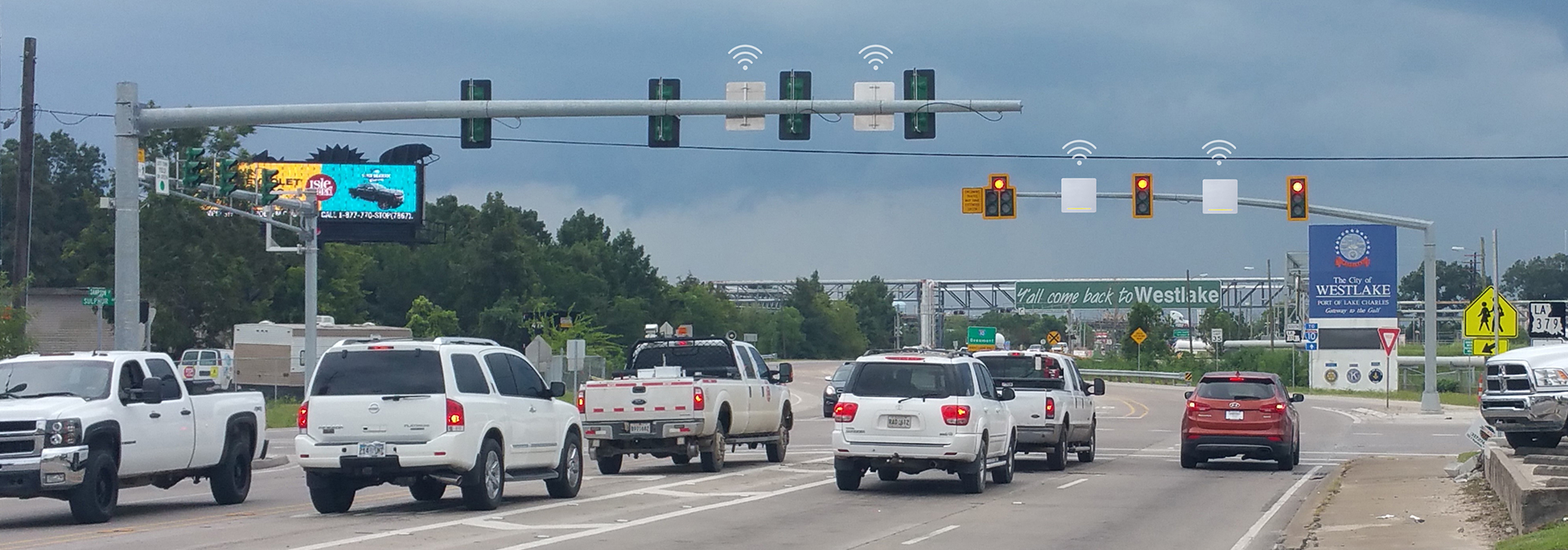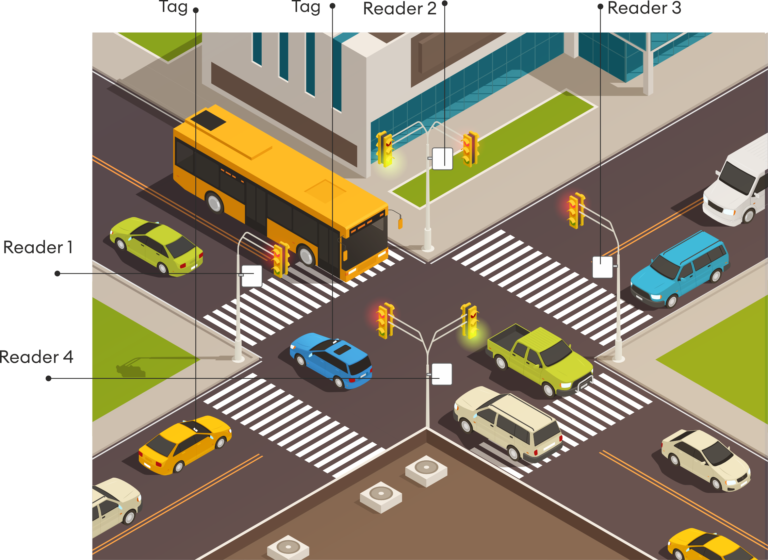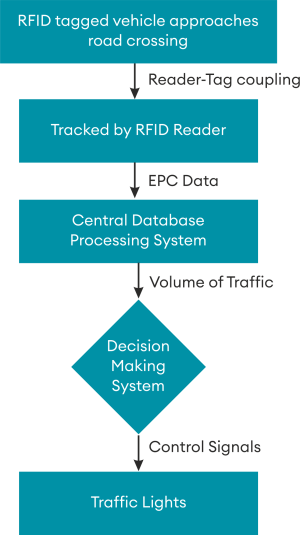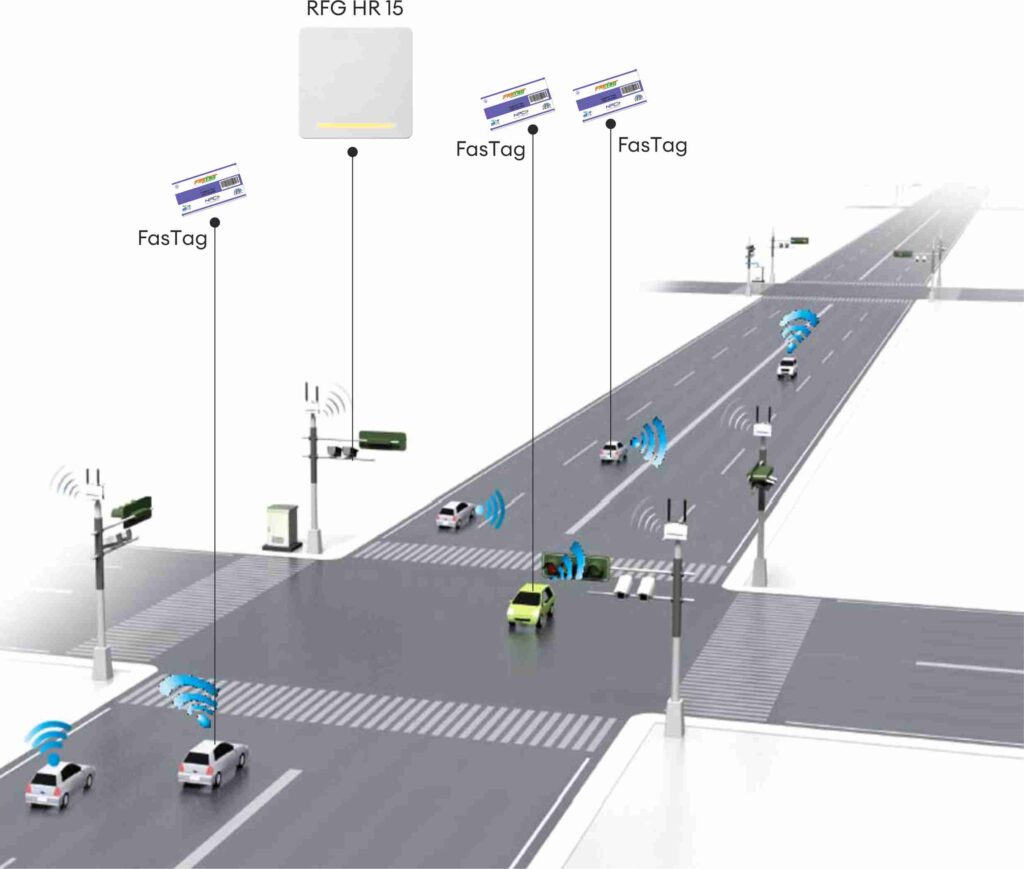RFID Intelligent Traffic Management

Vehicular traffic control at road crossings has always been a matter of concern for administrations in many modern cities around the world. Several attempts have been made to design efficient automated systems to solve this problem. Most of the present day systems use pre-determined timing circuits to operate traffic signals which are not very efficient because they do not operate according to the current volume of traffic at the crossing. It is often seen in today’s automated traffic control systems that vehicles have to wait at a road crossing even though there is little or no traffic in the other direction. There are other problems as well, like ambulances getting caught up by a red traffic signal and wasting valuable time. Congestion is often translated into lost time, missed opportunities, lost worker productivity, delivery delay and, in general, increased cost. Actually the traffic congestion is not only recurring (caused by recurring demand that exists virtually every day) but also non-recurring (caused by traffic incidents like damaged vehicles, crashes, work zones, weather and special events) in nature. To manage non-recurring congestion some sensor based systems were suggested for improvement over fixed timing controlled ones. However the performance was not satisfactory due to the necessity of a direct line-of-sight (LOS) path between sensor and vehicles. Further, simultaneous multiple detections were difficult to handle with a sensor-based system.
Solution Overcome:
To solve these problems and to add further enhancements to the complex problem of vehicular traffic control at road crossings an Intelligent Traffic Control Systems (ITCS) is proposed using radio frequency identification (RFID). The key idea is based on the principle of RFID tracking of vehicles, a topic on which many organizations are doing extensive research. A high speed RFID tag operating in 865-868 India MHz frequency band designed for nationwide road toll collection in India. Also it is specifically designed for fast tags moving objects (up to 40-80km/hr) which are being tested for possible implementation in vehicle tracking in India. Currently, available hardware can be used to monitor vehicles at a read distance of 40-70 Kmph.
All the Fast tags on vehicles read by Fast Tag Readers and EPC Data comes to Central Monitoring system to get the details of vehicles.

A wide busy highway in East-West direction while a narrower street is considered in North-South direction. The ITCS is comprised of a set of two RFID readers, separated by some distance, in each direction of a road crossing and have a central computer system (CCS) to control them all. As a vehicle passes by a reader, it tracks the vehicle through the RFID tag attached to the vehicle and retrieves its electronic product code (EPC) data. The EPC primarily consists of vehicular identification number (VIN). The VIN is an industry standard and each automobile has a unique VIN. Through a table lookup procedure the VIN may be matched against individual vehicle record and all details like type, weight, length, registration, pollution control status, and the owner’s identification can be retrieved.
The data obtained is then sent immediately to the CCS by wireless or wired channels, as found convenient at that location. The CCS contains a central database processing system (CDPS) for processing vehicular data and a decision making section (DMS) for controlling the traffic signals. The flowchart of the system is given in Figure 2 and a diagrammatic representation of the system is given in Figure 3.

- The novel architecture presented in this paper provides the following advantages:
- Traffic signals are operated according to the current volume of traffic. Some of the existing systems also operate according to traffic volume, however, the novelty lies in the way traffic volume is calculated.
- Differential priorities can be assigned to vehicles – (a) Ambulances, Fire Brigades and VIP vehicles can be given unrestricted passage irrespective of volume of traffic, (b) Scooters and cars can be given higher priorities during school and office rush hours, (c) Heavy vehicles can be given higher priority at night.
- Reportedly stolen vehicles, or vehicles booked for offense can be tracked and the time and direction of travel can be obtained.
- E-Tolling of vehicles can be done (for all directions or for any particular direction of travel).
- Reliable traffic data can be generated for statistical purposes.

